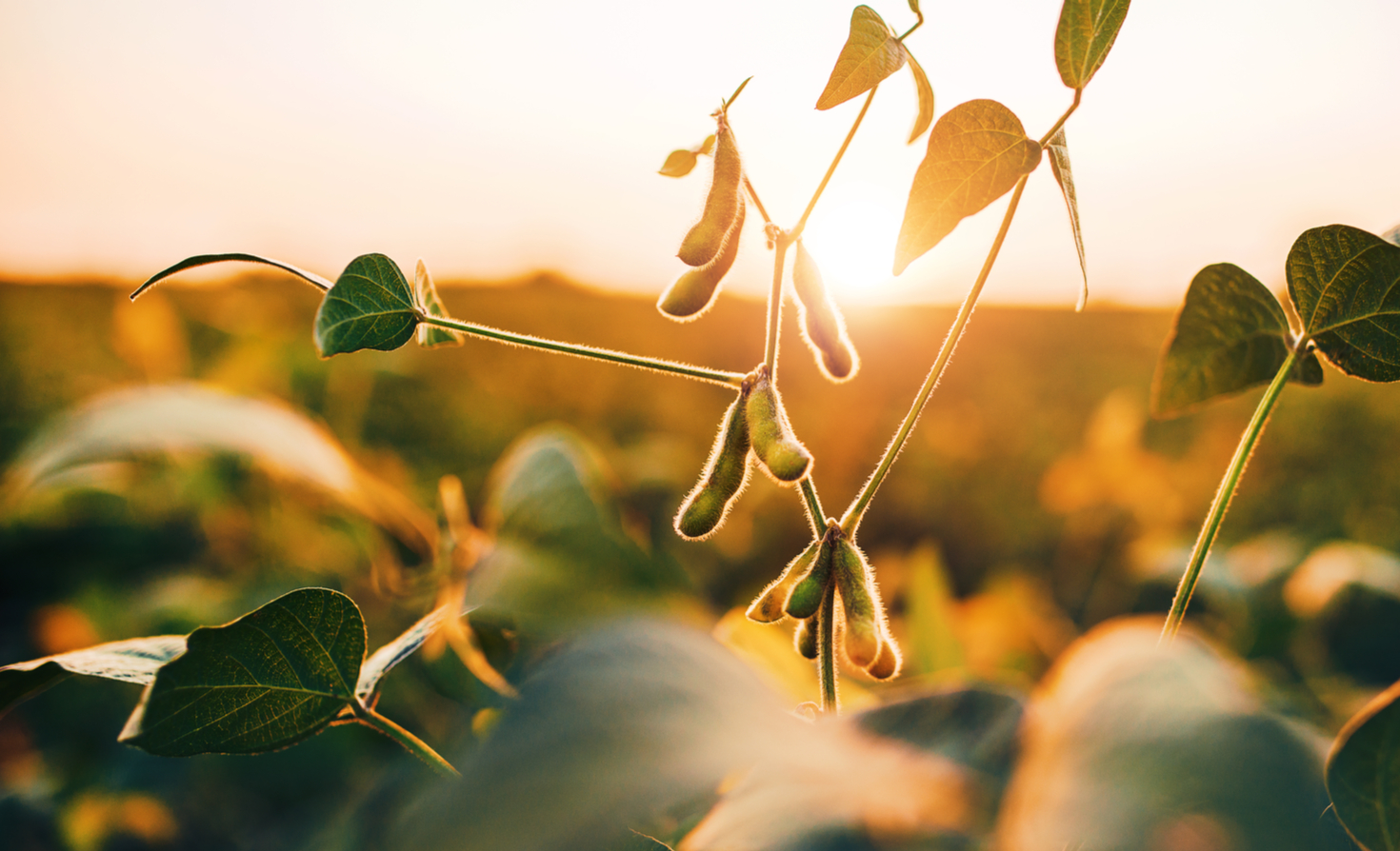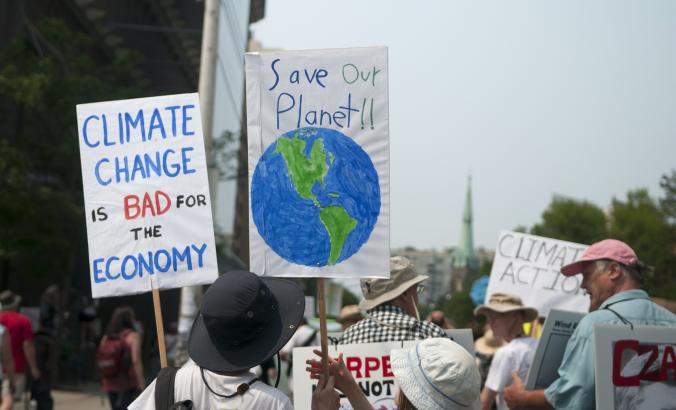Why the U.S.-China trade war is leaving firms vulnerable to soy risk

Is soy an overlooked climate risk commodity?
Consumers are increasingly aware of the planetary implications of their diets, and only those living under a rock will have failed to notice the market shifting accordingly: Rapidly growing numbers of peopleare cutting down on meator identifying as vegetarians or vegans, and food retailersare scramblingto offer more meat and dairy-free products.
Why? Well, very broadly, plant-based diets can be both healthier and homegrown, while red meat requires swathes of land for livestock, which generate methane, a greenhouse gas around 25 times more potent than carbon dioxide.
But the environmental impacts of meat and poultry consumption do not just occur within the meat supply chain alone. Perhaps less well known is that, overwhelmingly, the animals we eat are fed on soy, which also requires significant areas of land to cultivate, crucially often at the expense of forested land.
The impacts of deforestation on our climate are immense. Deforestation accounts for 12 percent of total global greenhouse gas emissions, and 80 percent of that deforestation is driven by agricultural expansion, especially for cattle and soy, as well as products such as timber, palm oil. By 2100, the cost of climate change impacts related to forest emissions will rise to around $1 trillion a year worldwide.
So altogether, the severe climate impacts of meat — particularly beef — production are twofold, affected by both animal diets, as well as our own diets.
Yet while the consumer awareness of palm oil production in relation to deforestation has risen significantly, thanks in part to U.K. retailer Iceland'sadvertising campaign last yearfocused around the plight of endangered orangutans, there has been far less focus on the risks posed by soy production.
Which perhaps explain why, as a new report from CDP makes clear, there is a huge lack of awareness among companies and financial institutions invested in the soy value chain of the significant physical, regulatory and reputational risks they are exposed to. The report is aptly titled"The Neglected Risk" (PDF).
This is particularly the case in China, the world's second-largest economy, which is at the forefront of the global soy market. China is the world's biggest importer of soy, and the United States and Brazil are the world's two largest producers. However, following recent troubles in China-U.S. trade relations, which have seen both countries slap trade tariffs on some of each other's key products, China increasingly has turned to Latin America, particularly Brazil, to meet its growing demand for soy.
“大豆消费直接与牛有关consumption," Morgan Gillespy, CDP's global director for forests, tells BusinessGreen. "So China is importing more soy because they are also farming their own livestock to feed an ever-growing meat-driven appetite for Chinese consumers, and they need to increase their imports of soy to feed those cattle."
Demand for soy in China is likely to continue rising, potentially triggering further and faster deforestation, particularly in Latin America, from where China sources 60 percent of its soy. This comes with huge risk implications for the Chinese soy supply chain and investors, she explains.
"We do have concerns that Brazil will exponentially increase the amount of land devoted to soy to make up the shortfall caused by current Sino-U.S. tensions," Gillespy explains. "There are estimates by Brazilian organizations such as Imaflora that more than [321 million aces] of currently unprotected land in Brazil could be legally deforested. We also know that trade wars in the past have led to sharp increases in Brazil's production of soy."
这是离开公司和银行暴露d to significant risks. CDP analyzed a sample of 30 companies involved in the Chinese soy supply chain, as well as 35 Chinese financial institutions identified as having provided loans to the sector. It found at least $2.1 billion of loans made by Chinese banks to Chinese companies in the soy supply chain were exposed to deforestation risks, representing more than a third of total loans provided to the sector. It also found bond and share issues with a value of over $7.1 billion were exposed, as well as $1.55 billion worth of shares.
At the same time, none of the financial institutions identified had assessed its capital exposure related to deforestation risks, nor had it developed any dedicated policies to address deforestation risks. In fact, just eight of the 35 banks had any general environmental risk policy in place at all to inform their financial decision making, according to CDP.
Meanwhile, although five soy producers making up just over half of soy imports into China — ADM, Cargill, Bunge,Louis Dreyfus Companyand COFCO — have taken steps to address deforestation risk in their supply chains, the majority of Chinese soy companies have not, the analysis found.
Still, why should any of this matter to U.K. and Europe-based companies? Gillespy argues the situation in China reflects the situation in many Western nations as well.
"What we're finding in the soy market is that there is a really low level of awareness as to actually where [companies'] soy is coming from," she says. "We see this in other importer countries, and the U.K. is an importer country. Because the supply chains are so complex and soy goes through so many different steps before it actually ends up at a retailer, it's really difficult for companies to get a handle on where their supply is coming from."
For Gillespy, the analysis also shows just how much of an "overlooked investment risk" the soy sector is for businesses. Financial institutions and businesses everywhere, she argues, should therefore improve their environmental risk management systems, firstly by assessing the proportion of capital in their portfolios or loan books exposed to deforestation risks, and then developing global policies to integrate risk assessment into their decision making and engagement with clients.
"The very first step is awareness — companies need to undertake a risk assessment to really understand how far down their supply chain they can trace, and start to understand the complexities and push pressure through their different suppliers," Gillespy explains.
For now, soy may be an overlooked commodity in the climate challenge. But savvy businesses taking take steps to address their exposure won't just be benefitting the planet, they'll also be better insulated against rising consumer awareness of the impacts of their diets.
This story first appeared on:




